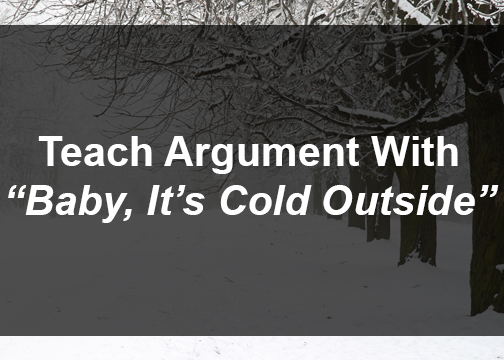To receive free and awesome lesson plans in your email all year long, click here! If you’d like to pay with a PO, request a quote here!
The song “Baby, It’s Cold Outside” is incredibly popular every year, and it seems that each winter, a new rendition is released. (Idina Menzel and Michael Bublé? Yep. Lady Gaga and Joseph Gordon-Levitt? Sure. Brett Eldridge and Meghan Trainor? Why not.) Fortunately for us, the song is essentially comprised of two competing arguments — crafted by two speakers that either aren’t attuned to their target audiences, or are attuned and are simply tangled up in their flirtation.
This lesson prompts students to analyze each of these arguments (i.e. Does she really want to leave? What case is he making for her to stay? Is it effective? How might it be strengthened?), to compare both arguments with one another, to engage in an intertextual analysis with other pop songs with similar rhetorical approaches, and more.
If you’re a member of the TeachArgument Community, simply log in to grab this lesson! If not, register here, OR, purchase this lesson a la carte for only $4.99!
Lesson Description
This lesson bundle includes:
- A structured comparative analysis handout to help organize students’ analyses
- Two versions of a close reading exercise — which can be completed by all students OR by alternating groups (i.e. “A groups” and “B groups,” jigsawing and discussing their analyses once they complete their respective close readings)
- A comparative analysis exercise that prompts students to consider “Baby, It’s Cold Outside” side-by-side with two additional popular songs with a similar rhetorical approach. This includes a graphic organizer and a writing prompt.
As always, materials are included in both PDF and editable Word Doc format.
If you’re a member of the TeachArgument Community, simply log in to grab this lesson! If not, register here, OR, purchase this lesson a la carte for only $4.99!
Lesson Features
| Grades | Middle and High School Appropriate |
| Focus | Rhetorical analysis; comparative analysis; close reading |





